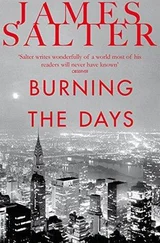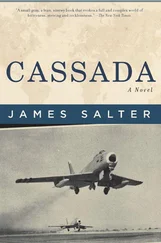“No, it hasn’t,” Bowman said. “We went to the museum, don’t you remember?”
“Yes, of course,” she corrected herself.
It was true. She remembered it then. She’d forgotten.
Then she began having a little trouble with her balance. There were always flowers in the house, often yellow jonquils, and she dressed nicely, but walking through the dining room one afternoon, unexpectedly she fell. It felt as if the floor had shifted beneath her feet, she said. She hit her arm against the edge of the dining room table and opened a long gash. She went to the emergency room and as a matter of routine saw her regular doctor afterwards. He noticed that she was unblinking and that there was a slight, rhythmic tremor in her hand, signs of Parkinson’s disease.
She didn’t know why her hand shook, she told her sister.
“It shakes a little, but if I move it, it doesn’t. Do you see?”
“Hold your hand out,” Dorothy said. “You’re right, there’s nothing.”
But later in the kitchen Beatrice dropped a glass.
“Yes, I’m fine,” she said, “but here I am, can’t even hold a glass.”
“It’s nothing,” Dorothy said. “Don’t move. I’ll sweep it up.”
“No, Dorothy, let me. I’ll do it. It’s the second one I’ve broken this week.”
She continued to have problems with her balance, she was no longer confident about it, and also she became a little stooped. Age doesn’t arrive slowly, it comes in a rush. One day nothing has changed, a week later, everything has. A week may be too long a time, it can happen overnight. You are the same and still the same and suddenly one morning two distinct lines, ineradicable, have appeared at the corners of your mouth.
In the end, however, it was not Parkinson’s, although for a long time the doctor believed it was. Beatrice had fallen twice more and was fumbling with the tasks of daily living. Finally, Dorothy came to live with her. The Fiori had been sold when Frank had been diagnosed with a brain tumor and had gone mad. He had also gone off with one of the waitresses. Dorothy described it as madness.
“But he had a tumor?”
“Oh, yes.”
Bowman saw his uncle as having had a premonition and wanting to open his long-folded wings, such as they were, a last time—he’d been in a hospital in Atlantic City and had left with a woman named Francile.
“Have you heard from him?” Bowman asked.
“No,” Dorothy said. “But, you know, he’s crazy.”
In fact, they did not hear from him again.
As time went on, Beatrice began, almost casually it seemed, to have hallucinations or pretend to. Especially in the evening she would see people who weren’t there and talk to them.
“Who’re you talking to?” Dorothy asked.
“Mr. Caruso,” Beatrice said.
“Where is he?”
“There. Isn’t that Mr. Caruso?”
“I don’t see anyone. There’s no one there, Beatrice.”
“That was him. He wouldn’t talk to me,” she explained.
Caruso owned the wine and liquor store, or had. Dorothy was certain he’d retired.
Beatrice also knew, although at first she did not say it, that she was not in her own house. Although she had lived in it for nearly fifty years, she was certain she had been taken someplace else. There began to be times when she didn’t recognize Dorothy or even her son. It turned out finally that she had something that resembled Parkinson’s and was often taken for it, a less well-known condition called Lewy body disease, the bodies being microscopic proteins that attacked nerve cells in the brain, some of the same cells affected in Parkinson’s. The diagnosis had taken a long time because the symptoms of the two diseases were similar. Hallucinations, however, were a distinction.
The exact cause of Lewy body was not known. The symptoms gradually worsened. The end was inevitable.
Beatrice was so often herself that it seemed the episodes were a lapse and might gradually disappear, but it turned out the opposite. Her essential person, however, was intact.
“Dorothy,” she said one day, “do you remember when we lived at Irondequoit Bay? The old trunks that were in the attic, what was in them, I forget?”
“Oh, my God, Beatrice, I don’t know. A lot of stuff, clothes, old photographs.”
“What became of all that?”
“I don’t know.”
“I wonder. I have some keys to trunks, but I don’t know which ones.”
“There are none.”
“Where are they?” Beatrice asked.
She had a recurring dream or perhaps thought about the trunks. She was sure there had been trunks. She could see them. Then she was not sure. They could have been something she imagined. It was her memory that she had the keys to but could not make fit. Nor could she make Dorothy see who had somehow come into the house. And there were the concerns of daily life. Where was the medicine that she was supposed to take?
“Two times a day?” she asked again.
“Yes, two.”
“It’s hard to remember,” Beatrice complained.
Bowman came by train, looking out at the haze of the Jersey meadows, marshes really. He had a deep memory of these meadows, they seemed a part of his blood like the lone gray silhouette of the Empire State Building on the horizon, floating as in a dream. He knew the route, beginning with the desolate rivers and inlets dark with the years. Like some ancient industrial skeleton, the Pulaski Skyway rose in the distance and looped across the waters. Nearer, in a rush, blank factories of brick with broken windows went past. Then there was Newark, the grim, lost city of Philip Roth, and churches with trees growing from the base of neglected spires. Endless quiet streets of houses, asylums, schools, all of an emptiness it seemed, intermixed with bland suburban happiness and wholesome names, Maplewood, Brick Church. The great, smooth golf courses with immaculate greens. He was of it, from it, and as he rode, unconnected to it.
On the corner stood the diner where he had taken Vivian the first time. It was not even the diner that Hemingway wrote about, he now knew. That was in another place called Summit, near Chicago, but there had been other misconceptions at the time. He had been wrong about a number of things. He remembered, but only as a collection of certain incidents that were like photographs, what Vivian had been like. He didn’t remember her voice and only with wonder—partly with wonder—what had persuaded him that she was the girl he should marry.
He had walked to school on Morris Avenue, Summit High School, a very good school, so well regarded that Ivy League colleges would accept without question any student the principal recommended. Before the war, that did not seem extraordinary, it was simply the way of things. In those days, Japan existed only in newsreels and cheap goods marked Made in Japan . No one, no ordinary person dreamed that this curious, distant country out of Gilbert and Sullivan was as dangerous as an open razor and had the discipline and daring to do the unthinkable, cross in strength and absolute secrecy the most northern Pacific to attack at dawn on a quiet morning the unsuspecting American fleet in Pearl Harbor, an almost fatal blow. Pearl Harbor, no one even knew where Pearl Harbor was, they had only a vague idea. When the grave news was broadcast in America interrupting the quiet Sunday afternoon, it was accompanied with no details and almost made no sense. The Japanese. Attacking. The complete unexpectedness.
He had been a schoolboy. His mother was in her thirties. He barely remembered his father. It was a somewhat shameful thing to have divorced parents. He knew only one other boy like himself, a strange boy named Edwin Semmler with a large head, extremely shy and an outstanding student—he was called The Brain. Everyone in the class or almost everyone had gone to the senior prom and the parties at the hotel, almost everyone but not Semmler. No one expected him to. No one knew much about him, he averted his head when walking past people. Bowman had several times tried to talk to him without much success. As it turned out, he was killed in the war. He was in the infantry, it was hard to imagine. Kenneth Keogh hadn’t been killed, but it was almost as bad. He’d also been in the infantry, as a sergeant, and had come through the war unharmed. During the Occupation, in barracks, he’d been hit in the spine by a bullet accidentally fired by someone cleaning a rifle and he was paralyzed from the waist down. In a wheelchair he took the train to work in New York every day, Bowman had seen him several times, the same Kenneth Keogh but with legs of rags.
Читать дальше












